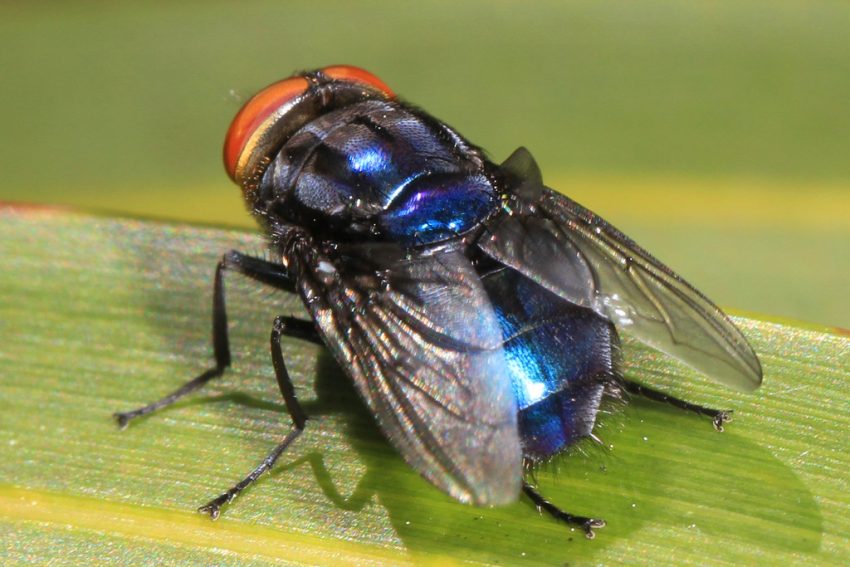In a decisive move to protect American agriculture, U.S. Agriculture Secretary Brooke Rollins unveiled a comprehensive five-point plan on June 16, 2025, at Moore Air Base near Edinburg, Texas, to combat the resurgent New World screwworm (Cochliomyia hominivorax). This parasitic fly, eradicated from the United States in 1966, has reemerged as a dire threat in Central America and Mexico, with recent detections just 700 miles from the U.S. border. The screwworm’s capacity to devastate livestock, wildlife, and even humans demands urgent action. The USDA’s strategy, centered on sterile insect technology, enhanced surveillance, and international cooperation, is a bold effort to halt the pest’s northward march. But is this the right approach, and what are the chances it will succeed?
The New World screwworm is a formidable adversary. Female flies lay thousands of eggs near wounds or orifices on warm-blooded animals, and their larvae burrow into living tissue, causing severe injury, infection, and often death. A single outbreak in Texas in 1976 ravaged over 1.4 million cattle and 332,600 sheep and goats. Today, experts estimate a modern outbreak could cost Texas cattle producers $732 million annually and the state’s economy $1.8 billion, with national losses potentially reaching $1.9 billion for Texas alone. Beyond livestock, the screwworm threatens wildlife, pets, and, in rare cases, humans, posing risks to food security and public health. Its rapid spread—moving 400 miles in weeks from southern Mexico to within striking distance of the U.S.—has alarmed industry leaders. The National Cattlemen’s Beef Association has pointed to weak eradication efforts in Central America and bureaucratic hurdles in Mexico as key factors allowing the pest’s advance.
The USDA’s response is a multifaceted plan designed to detect, contain, and eliminate the screwworm before it crosses the border. At its core is the revival of Moore Air Base as a sterile fly dispersal facility, backed by an $8.5 million investment. The facility aims to produce 300 million sterile flies per week, complementing an existing plant in Panama and a retrofitted facility in Mexico, supported by a $21 million USDA investment. The plan also includes enhanced surveillance through fly traps along the Rio Grande and monitoring of cruise ships to prevent screwworm introduction. To curb the immediate risk, the USDA suspended imports of live cattle, horses, and bison from Mexico on May 11, 2025, a move that addresses the pest’s spread but could tighten beef supplies and raise prices. Additionally, the plan invests in research for new treatments and preventive measures and emphasizes collaboration with Mexican officials to contain the screwworm south of the border.
The cornerstone of this strategy, the sterile insect technique (SIT), is a time-tested method that eradicated screwworms from the U.S. decades ago. The process begins with mass-rearing male screwworm flies in controlled facilities, where they are fed specialized diets. These flies are then sterilized using controlled doses of radiation, ensuring they remain capable of mating but produce no viable offspring. Released via aircraft over affected areas, the sterile males compete with wild males, gradually reducing the screwworm population. The technique is environmentally friendly, avoiding the ecological damage of chemical pesticides, and has a proven track record. However, producing and dispersing 300 million flies weekly is a logistical feat requiring significant infrastructure, precise coordination, and international cooperation, particularly with Mexico, where past restrictions on USDA aircraft and customs duties have hindered efforts.
The risks of SIT are minimal. Sterile flies do not persist in the ecosystem or reproduce, posing little environmental threat. Public concerns about releasing irradiated insects are possible but can be addressed through education. The greater challenge lies in execution. The Moore Air Base facility may take three years to reach full capacity, leaving a window of vulnerability. Mexico’s cooperation is critical, yet bureaucratic delays and geopolitical tensions could disrupt sterile fly dispersal. The import ban, while necessary, may strain U.S.-Mexico trade relations and impact beef markets, highlighting the need for swift containment to minimize economic fallout.
Is this the right approach? The USDA’s plan is grounded in science and history, leveraging a method that has worked before. Its comprehensive nature—combining immediate measures like import bans with long-term solutions like sterile fly production and research—sets it apart from narrower alternatives, such as relying solely on chemical treatments or stricter border controls, which may be less sustainable or effective. Congressional leaders, Texas officials, and industry groups like the Texas Farm Bureau have rallied behind the plan, signaling strong support. However, success hinges on overcoming logistical hurdles and securing Mexico’s full commitment. The screwworm’s rapid advance underscores the urgency of acting now, and delays in facility development or international coordination could allow the pest to breach containment zones.
The likelihood of success is cautiously optimistic. The SIT’s historical triumph, coupled with the USDA’s substantial investments and stakeholder backing, provides a strong foundation. Secretary Rollins’s pledge to assess progress within 30 days reflects a commitment to adaptability. Yet challenges remain: Mexico’s inconsistent support, the time required to scale up production, and the screwworm’s relentless spread demand flawless execution. If the USDA can navigate these obstacles, the plan stands a strong chance of halting the screwworm before it reaches U.S. soil, protecting farmers, ranchers, and the nation’s agricultural economy from a devastating pest.
In conclusion, the USDA’s five-point plan is a robust response to a clear and present danger. The New World screwworm threatens not just livestock but the stability of an industry vital to America’s food supply. By reviving proven techniques, investing in infrastructure, and fostering international partnerships, the USDA is taking a calculated stand. While risks and challenges remain, the strategy’s blend of science, urgency, and collaboration offers hope that the screwworm can be stopped in its tracks, safeguarding a critical sector for generations to come.


